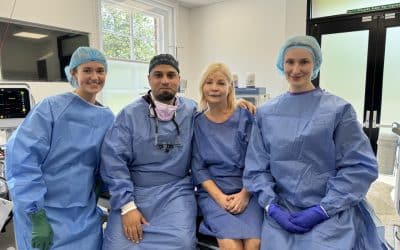Breast reduction surgery, also known as reduction mammoplasty, is a life-changing procedure for many women. It alleviates physical discomfort and can significantly improve one’s quality of life.
However, like any surgical procedure, it comes with a recovery period that requires careful attention. Understanding common problems that may arise during recovery and how to avoid them is crucial for a smooth and successful healing process.
Understanding the Recovery Process
Recovery from breast reduction surgery varies from person to person but typically involves a few weeks of rest and limited physical activity. The first few days after surgery are usually the most uncomfortable, with swelling, bruising, and pain being common. During this time, it’s essential to follow your surgeon’s post-operative care instructions closely to ensure proper healing.
Common Problems After Breast Reduction Surgery
Swelling and Bruising
Swelling and bruising are natural responses to surgery and can last for several weeks. While they generally subside on their own, excessive swelling or prolonged bruising may indicate complications such as hematoma (a collection of blood outside blood vessels).
How to Avoid:
- Use cold compresses as recommended by your surgeon to reduce swelling.
- Keep your upper body elevated while resting or sleeping to minimise fluid accumulation.
- Follow your surgeon’s instructions regarding the use of compression garments, which can help reduce swelling and support your breasts as they heal.
Infection
Infections can occur at the incision sites if proper hygiene is not maintained. Signs of infection include increased redness, warmth, unusual discharge, or fever.
How to Avoid:
- Keep the incision areas clean and dry, changing dressings as instructed.
- Avoid submerging your breasts in water (such as in baths or pools) until your surgeon gives the go-ahead.
- Take all prescribed antibiotics as directed, even if you feel better before finishing the course.
Scarring
Scarring is inevitable with any surgery, but the extent and appearance of scars can vary. Some patients may develop keloids, which are raised, thickened scars that extend beyond the incision lines.
How to Avoid:
- Avoid strenuous activities that may stretch or stress the incisions during the healing period.
- Apply scar-minimising treatments, such as silicone sheets or gels, as recommended by your surgeon.
- Protect your scars from the sun by keeping them covered or applying a broad-spectrum sunscreen to prevent discolouration.
Nipple Sensitivity and Numbness
Changes in nipple sensitivity, including numbness or hypersensitivity, are common after breast reduction surgery. This is usually temporary, but in some cases, it can be long-lasting.
How to Avoid:
- Follow your surgeon’s advice on how to manage discomfort, such as using cold packs or over-the-counter pain relievers.
- Be gentle when touching your breasts or performing any activities that might affect the nipples until full sensation returns.
- Keep in mind that full nerve recovery can take several months, so patience is essential.
Asymmetry
After breast reduction surgery, some patients may notice that their breasts are not perfectly symmetrical. While some degree of asymmetry is natural, significant differences may require further surgical intervention.
How to Avoid:
- Choose a highly experienced, board-certified plastic surgeon to minimise the risk of asymmetry.
- Discuss your expectations clearly with your surgeon during the consultation process.
- Understand that minor asymmetry is normal, and your body will continue to adjust as it heals.
Delayed Healing
Delayed wound healing can occur due to factors like poor circulation, infection, or excessive movement during recovery. This can lead to complications like widened scars or even the need for additional surgery.
How to Avoid:
- Refrain from smoking before and after surgery, as it can impair blood flow and delay healing.
- Follow all post-operative care instructions, including restrictions on physical activities.
- Maintain a healthy diet and stay hydrated to support your body’s natural healing processes.
Tips for a Smooth Recovery
- Follow Your Surgeon’s Instructions: This cannot be stressed enough. Your surgeon will provide you with specific guidelines tailored to your situation.
- Rest and Take It Easy: Your body needs time to heal, so avoid strenuous activities, heavy lifting, and any actions that might strain your chest muscles.
- Stay in Touch with Your Surgeon: Regular follow-up appointments are crucial. These visits allow your surgeon to monitor your healing progress and address any concerns promptly.
When to Seek Medical Attention
While minor discomfort is expected during recovery, certain symptoms should prompt you to contact your surgeon immediately. These include:
- Severe or increasing pain not relieved by prescribed medications.
- Signs of infection such as fever, unusual discharge, or worsening redness.
- Excessive swelling, bruising, or the sudden appearance of a lump.
- Difficulty breathing or chest pain.
Contact Us for More Information
Breast reduction surgery can bring significant relief and satisfaction, but the recovery process is just as important as the surgery itself. By being aware of potential problems and following the advice above, you can minimise risks and ensure a smooth healing journey. If you have any concerns or questions about your recovery or are considering breast reduction surgery, we’re here to help.
Contact us today to learn more about breast reduction recovery, or to schedule a consultation with our experienced surgical team. We are committed to providing the highest standard of care to help you achieve the best possible results.


